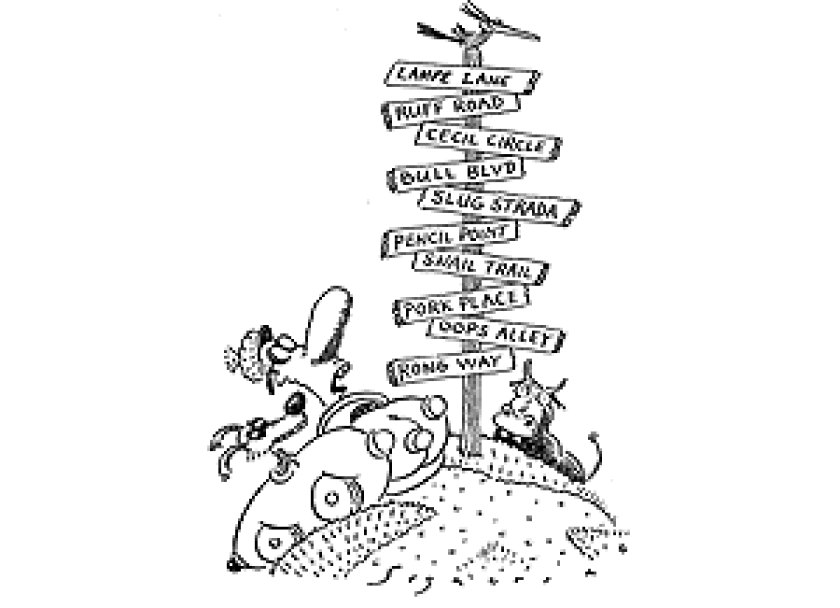Dear Cecil: What’s the difference between a street, a road, an avenue, a boulevard, etc.? There seems to be no rhyme or reason as to how the names of public ways are suffixed. Does it depend on width, length, importance, or (more likely) the builder’s whim? Please advise. Will Lampe, Englewood, New Jersey
Cecil replies:
Whimsy? Lesser minds might describe it as whimsy. I see it as evidence of the same confusion that got us involved in a war in the Balkans.
Whatever scarcities we may have in this world, a shortage of street-name suffixes isn’t one of them. The possibilities include but are not limited to alley, avenue, boulevard, circle, court, cove, crescent, crossing, dale, drive, estate, extension, gardens, gate, heights, highway, lake, landing, lane, loop, park, parkway, path, place, plaza, point, promenade, ridge, road, roadway, square, street, terrace, trace, trail, village, or way, to say nothing of commonly used foreign words such as camino, calle, etc.
Confronted with this plethora of terms, you’ll probably have one of the following reactions:
(1) We need some kind of system here.
(2) We don’t need no stinking system, we need some minimal restrictions to protect the public interest.
(3) Whatever, I don’t care. Go away.
Reaction #3, I venture to say, has historically predominated among the public officials nominally in charge of these things, but reaction #1 has occurred often enough to convince people there’s some underlying plan when in fact there isn’t. The most famous sorta-system is Manhattan’s grid of north-south avenues and east-west streets. Here’s another from the Tri-County Regional Planning Commission of Lansing, Michigan (my assistant Jane lives there, that’s why): Cul-de-sacs should be named circle, court, way, or place Meandering streets — drive, lane, path, trail North-south streets — avenue, highway Streets with planted medians — boulevard, parkway.
Guilford County, North Carolina, prefers: North-south streets — street; east-west — avenue (take that, Manhattan) Diagonal — road Dead-end streets — terrace, point, cove, dale, way Cul-de-sacs — court Short curved roads with ingress and egress from the same thoroughfare — circle.
Kenai Peninsula Borough, Alaska, is even more precise: North-south cul-de-sac — circle. East-west cul-de-sac — court. Northwest-southeast street — drive Northeast-southwest street — lane (doesn’t the Kenai planning department have anything better to do?) Begins and ends at same thoroughfare — loop Meandering — road.
You get the picture. Lacking a detailed national standard (where are the French when we need them?), we’re left with a muddle. One may hazard the generalization that long streets typically are called avenue, street, highway, road, etc., while short ones get terrace, court, place, and the like. But there are many exceptions even to this simple rule.
Don’t despair. The U.S. Postal Service, exhibiting rare common sense, has decided suffixes aren’t worth worrying about. It merely requests that street names be unique without regard to suffix, lest mail carriers be confused if the suffix is left off. (A notorious violator of this principle is Chicago, which has numerous instances of streets with names like 21st Place running parallel to 21st Street.) The agency adds a few other reasonable guidelines, e.g., street names should sound dissimilar to one another to avert mix-ups. These rules appear to have been widely adopted by local officials. In short we have a collective bureaucratic judgment that the power of the state ought to be exercised economically, a conclusion that might be applied to many aspects of public life.
Cecil Adams
Send questions to Cecil via cecil@straightdope.com.
